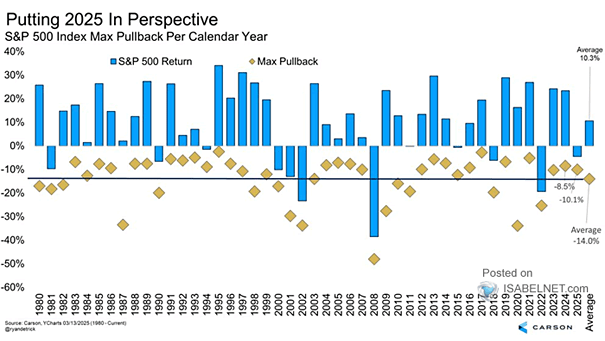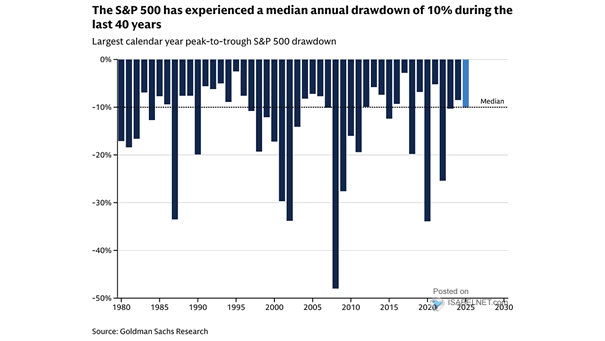S&P 500 Index Max Pullback per Calendar Year
S&P 500 Index Max Pullback per Calendar Year Being prepared for market fluctuations is crucial for building wealth. Since 1980, the S&P 500 index has, on average, gained 10.3% annually, with a peak-to-trough pullback of 14.2%. Image: Carson Investment Research


